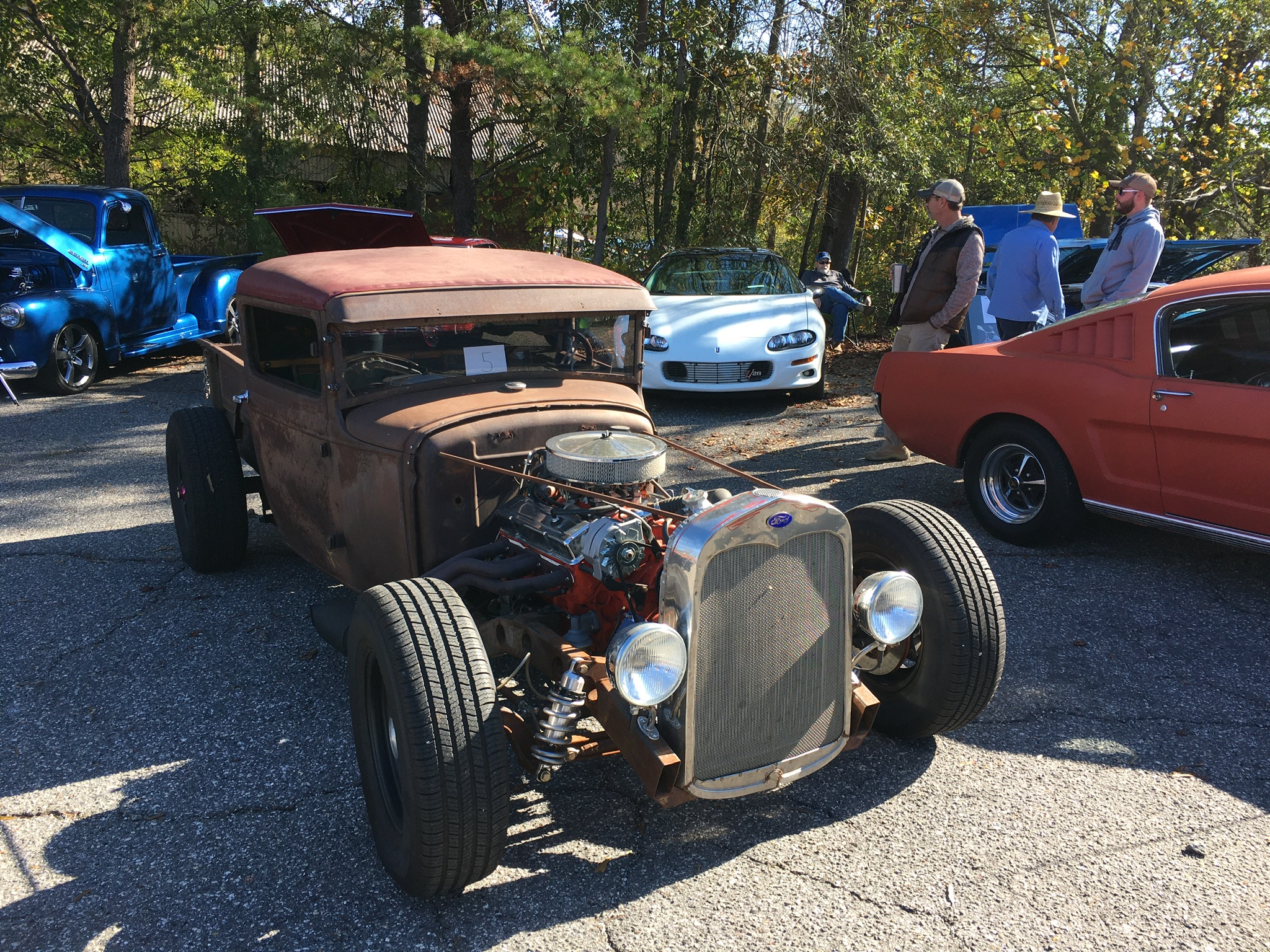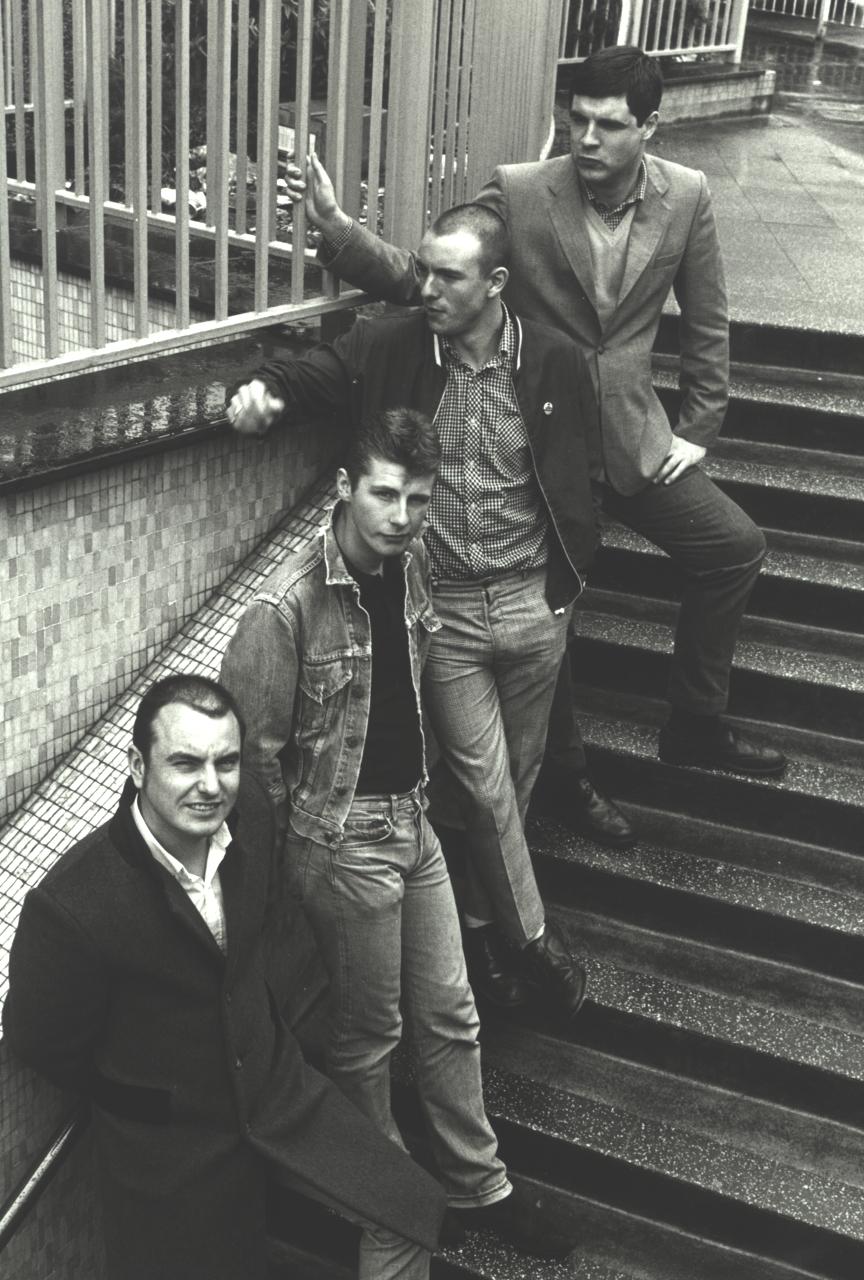|
Kustom Kulture
Kustom Kulture is a neologism used to describe the artworks, vehicles, hairstyles, and fashions of those who have driven and built custom cars and motorcycles in the United States of America from the 1950s through today. It was born out of the hot rod culture of Southern California of the 1960s. In the early days of hot rodding, many fashions and styles developed. Over time, each of these distinct styles of customizing have blended and reshaped our everyday life. Artists such as Von Dutch (Kenny Howard), Robert Williams, and custom car builder Ed "Big Daddy" Roth; along with Lyle Fisk, Dean Jeffries; hot rod and lowrider customizers such as the Barris Brothers (Sam and George Barris); along with numerous tattoo artists, automobile painters, and movies and television shows such as ''American Graffiti'' and ''The Munsters'' ( The Munster Koach, DRAG-U-LA) have all helped to form what is known as Kustom Kulture. Kustom Kulture is usually identified with the greasers of the 19 ... [...More Info...] [...Related Items...] OR: [Wikipedia] [Google] [Baidu] |
Ratrod
A rat rod, as usually known today, is a custom car with a deliberately worn-down, unfinished appearance, typically lacking paint, showing rust, and made from cheap or cast-off parts. These parts can include non-automotive items that have been repurposed, such as a rifle used as a gear shifter, wrenches as door handles, or hand saws as sun visors. Whether or not so appointed, the rat rod uniquely conveys its builder’s imagination. The term has also been applied to a style of hot rod or custom car that broadly imitates or exaggerates the early hot rods of the mid-twentieth century, unlike the "traditional" hot rod, which is one built at that time or a close re-creation of one of such. Definition Originally, rat rods were a counter-reaction to the high-priced "customs" and typical hot rods, many of which were seldom driven and served only a decorative purpose. The rat rod's inception signified a throwback to the hot rods of the earlier days of hot-rod culture—built according to ... [...More Info...] [...Related Items...] OR: [Wikipedia] [Google] [Baidu] |
Tattoo
A tattoo is a form of body modification made by inserting tattoo ink, dyes, and/or pigments, either indelible or temporary, into the dermis layer of the skin to form a design. Tattoo artists create these designs using several Process of tattooing, tattooing processes and techniques, including hand-tapped traditional tattoos and modern tattoo machines. The history of tattooing goes back to Neolithic times, practiced across the globe by many cultures, and the symbolism and impact of tattoos varies in different places and cultures. Tattoos may be decorative (with no specific meaning), symbolic (with a specific meaning to the wearer), or pictorial (a depiction of a specific person or item). Many tattoos serve as Rite of passage, rites of passage, marks of status and rank, symbols of religious and spiritual devotion, decorations for bravery, marks of fertility, pledges of love, amulets and talismans, protection, and as punishment, like the marks of outcasts, slaves and convicts. E ... [...More Info...] [...Related Items...] OR: [Wikipedia] [Google] [Baidu] |
Mercury (automobile)
Mercury is a defunct division (business), division of the American automobile manufacturer Ford Motor Company. Created in 1938 by Edsel Ford, Mercury served as the medium-price brand of Ford for nearly its entire existence, bridging the price gap between the Ford and Lincoln Motor Company, Lincoln model lines. Competing against Buick and Oldsmobile from General Motors for decades, the brand also competed against Chrysler, Chrysler's namesake brand (following the closure of DeSoto (automobile), DeSoto). From 1945 until its closure, Mercury formed half of the Lincoln-Mercury Division of Ford, which served as a combined sales network (distinct from Ford) for its two premium automotive brands. Lincoln-Mercury also served as the sales network for Continental (1956–1960), Edsel (1958–1960) and Merkur (1985–1989). Through the use of platform sharing and manufacturing commonality, Mercury vehicles shared components and engineering with Ford or Lincoln (or both concurrently) ... [...More Info...] [...Related Items...] OR: [Wikipedia] [Google] [Baidu] |
Psychobilly
Psychobilly is a rock music fusion genre that fuses elements of rockabilly and punk rock. It's been defined as "loud frantic rockabilly music", it has also been said that it "takes the traditional countrified rock style known as rockabilly, ramp ngup its speed to a sweaty pace, and combin ngit with punk rock and imagery lifted from horror films and late-night sci-fi schlock,... reating agritty honky tonk punk rock." Psychobilly is often characterized by lyrical references to science fiction, horror (leading to lyrical similarities to horror punk) and exploitation films, violence, lurid sexuality, and other topics generally considered taboo, though often presented in a comedic or tongue-in-cheek fashion. Psychobilly bands and lyrics usually take an apolitical stance, a reaction to the right- and left-wing political attitudes which divided other British youth cultures. It is often played with an upright double bass, instead of the electric bass which is more common in modern rock ... [...More Info...] [...Related Items...] OR: [Wikipedia] [Google] [Baidu] |
Scooterboy
A scooterboy (or scooter boy) is a member of one of several scooter-related subcultures of the 1960s and later decades, alongside rude boys, mods and skinheads. The term is sometimes used as a catch-all designation for any scootering enthusiast who does not fall into the latter three categories. Definitions Michael Brake identifies the subculture differently, classifying it as a subgroup of the mods, alongside "art school mods", "mainstream mods", and "hard mods". Scooter boys, according to Brake, had "Italian motor scooters (a working-class sports car) covered in accessories and anoraks and wide jeans". According to Colin Shattuck and Eric Peterson, a scooter boy is more specifically, "one who attends scooter rallies and accumulates event patches on a garment of some kind". The garment is conventionally a MA-1 bomber jacket(Scooter Jacket), but can be any of several other types of jacket, a mechanic's, a motorcyclist's, or even a parka. According to Kayleen Hazlehurst, the ... [...More Info...] [...Related Items...] OR: [Wikipedia] [Google] [Baidu] |
Rockabilly
Rockabilly is one of the earliest styles of rock and roll music. It dates back to the early 1950s in the United States, especially the Southern United States, South. As a genre it blends the sound of Western music (North America), Western musical styles such as country music, country with that of rhythm and blues, leading to what is considered "classic" rock and roll. Some have also described it as a blend of bluegrass music, bluegrass with rock and roll. The term "rockabilly" itself is a portmanteau of "rock" (from "rock 'n' roll") and "hillbilly", the latter a reference to the country music (often called "Hillbilly#Music, hillbilly music" in the 1940s and 1950s) that contributed strongly to the style. Other important influences on rockabilly include western swing, boogie-woogie, jump blues, and electric blues. Defining features of the rockabilly sound included strong rhythms, boogie woogie piano riffs, vocal twangs, doo-wop acapella singing, and common use of the tape echo; bu ... [...More Info...] [...Related Items...] OR: [Wikipedia] [Google] [Baidu] |
Skinhead
A skinhead is a member of a subculture which originated among working class youths in London, England, in the 1960s and soon spread to other parts of the United Kingdom, with a second working class skinhead movement emerging worldwide in the late 1970s. Motivated by social alienation and working class solidarity, skinheads (often shortened to "skins" in the UK) are defined by their close-cropped or shaven heads and working-class clothing such as Dr. Martens and steel toe work boots, braces, high rise and varying length straight-leg jeans, and button-down collar shirts, usually slim fitting in check or plain. The movement reached a peak at the end of the 1960s, experienced a revival in the 1980s, and, since then, has endured in multiple contexts worldwide. The rise to prominence of skinheads came in two waves, with the first wave taking place in the late 1960s in the UK. The first skinheads were working class youths motivated by an expression of alternative values and wo ... [...More Info...] [...Related Items...] OR: [Wikipedia] [Google] [Baidu] |
Drag Racing
Drag racing is a type of motor racing in which automobiles or motorcycles compete, usually two at a time, to be first to cross a set finish line. The race follows a short, straight course from a standing start over a measured distance, most commonly , with a shorter, distance becoming increasingly popular, as it has become the standard for Top Fuel dragsters and Funny Cars, where some major bracket races and other sanctioning bodies have adopted it as the standard. The is also popular in some circles. Electronic timing and speed sensing systems have been used to record race results since the 1960s. The history of automobiles and motorcycles being used for drag racing is nearly as long as the history of motorized vehicles themselves, and has taken the form of both illegal street racing and as a regulated motorsport. History Drag racing started in the 1940s. World War II veterans were prominently involved, and some early drag races were done at decommissioned aircraft b ... [...More Info...] [...Related Items...] OR: [Wikipedia] [Google] [Baidu] |
Greaser (subculture)
Greasers are a youth subculture that emerged in the 1950s and early 1960s from predominantly working class and lower-class teenagers and young adults in the United States. The subculture remained prominent into the mid-1960s and was particularly embraced by certain ethnic groups in urban areas, particularly Italian Americans and Latino Americans. History Etymology of the term greaser The etymology for the term ''greaser'' is unknown. It is speculated that the word originated in the late 19th century in the United States as a derogatory label for poor laborers, specifically those of Italian, Greek or Mexican descent. The similar term "greaseball" is a slur for individuals of Italian or Greek descent, though to a lesser extent it has also been used more generally to refer to all Mediterranean, Latino, or Hispanic people. By the time of the Civil War, the word was understood to carry racist and segregationist meanings. It was later used to reference automotive mechanics. It w ... [...More Info...] [...Related Items...] OR: [Wikipedia] [Google] [Baidu] |
DRAG-U-LA
DRAG-U-LA, along with the Munster Koach, was one of two cars on the television show ''The Munsters'' designed by prolific show car designer Tom Daniel while working for George Barris and Barris Kustom Industries. The car The fiberglass body of DRAG-U-LA was built from a coffin that Richard "Korky" Korkes, Barris's project engineer, was able to purchase from a funeral home in North Hollywood. Korkes said in 2013 that it was illegal to sell a coffin without a death certificate, so he made a deal with the funeral director to pay in cash and have the coffin left outside the rear door to be collected after dark. The car had a 350 HP, 289ci Ford Mustang V-8 engine with a four-speed stick shift. It had two four-barrel carburetors mounted on a Mickey Thompson Ram-Thrust manifold. The carburetors were mounted backwards in an effort to save space and the pull type throttle actuation modified into a pusher type. The rear tires were 10.50-inch Firestone racing slicks, mounted on custo ... [...More Info...] [...Related Items...] OR: [Wikipedia] [Google] [Baidu] |



.jpg)




